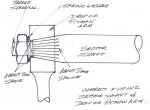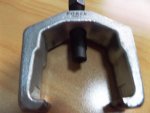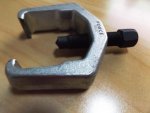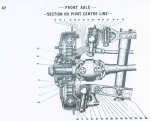I had to post this ... There comedians right? Everyone knows Citroen owners only have metric tools..... The puller, 1" 3/8 .....
I thought the DS was bad .... where do you jack this damn thing from ?
Yeah, the tapers are damaged in the drum. I fitted a good taper from the parts, the drum on the car has 4mm driveshaft protrusion, the spare has 3.4mm protrusion ... and both look munched.
This one has pretty much no protrusion.... and was a right bastard to break the taper on .... MUCH harder for the puller than the other side.
So the tapers look good, I just need to buy a drum. I'll still whip the shafts out and re-grease and check them







 ).
).